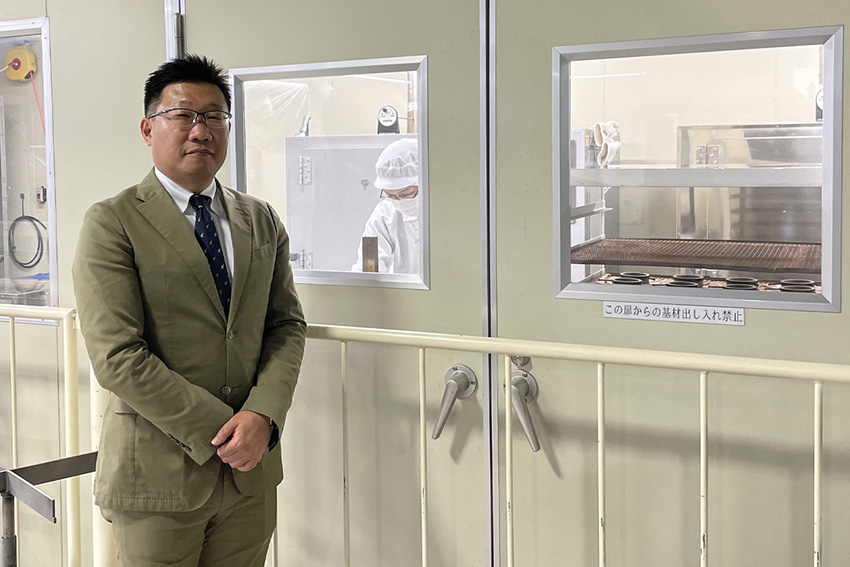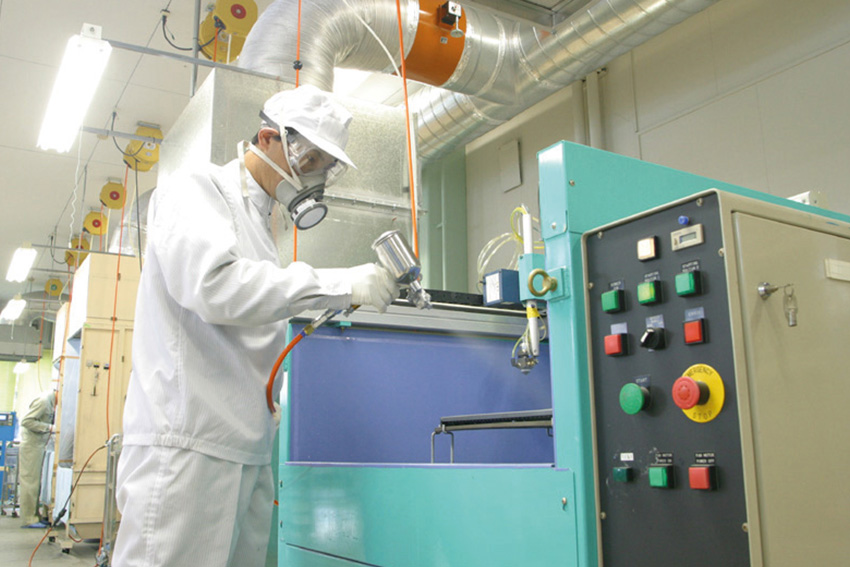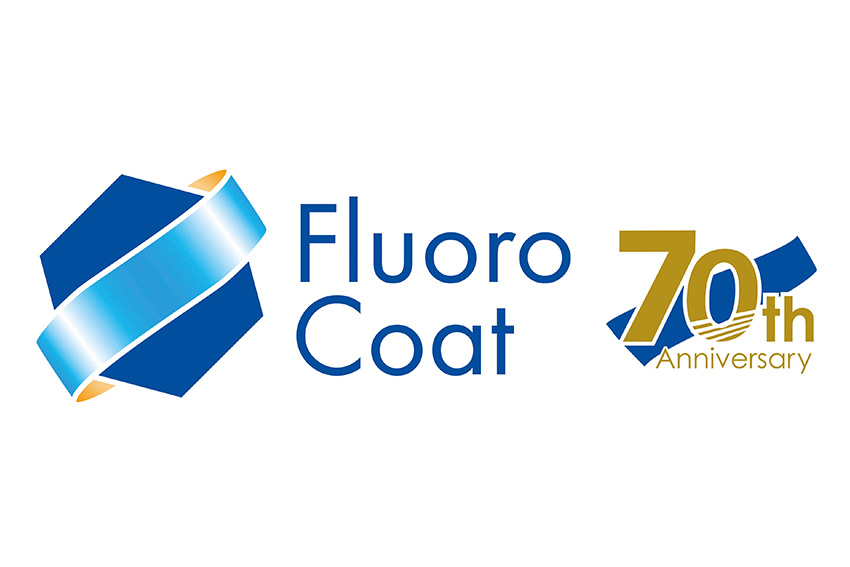A company focused on environmental responsibility, Fluorocoat is a specialist manufacturer of high-performance fluoropolymer coating technology, offering a whole host of innovative, premium-quality products trusted by clients hailing from a variety of business sectors.

The Japanese chemical sector is struggling due to the rise of regional competitors and the stiff price competition for the production of base chemicals. However, Japanese companies are known to be leaders in highly functional and specialized chemicals. Mitsubishi Chemical stands out for example. On top of that, Japan is home to various chusho kigyos. This allows for the development of niche chemicals and material technologies. From your point of view, what are the strengths and weaknesses of the Japanese chemical industry today?
As you mentioned, Japanese companies have very high competency and capabilities when it comes to the development and provision of advanced and highly functional materials. This is particularly the case regarding materials for semiconductor production for example. We can provide top-notch development capabilities. On the other hand, however, Japan is weak when it comes to base chemicals. The cost competitiveness of the Japanese chemical industry remains a little questionable. Also, the global market share of Japanese chemical companies is very small. Mitsubishi Chemical currently stands in 8th place. However, they are the only Japanese company in the top 15.
One of the biggest difficulties that the Japanese chemical industry is faced with is that while the JPY is depreciating and labor costs are decreasing, Japanese companies cannot procure crude oil, minerals, and other raw materials within Japan. That is the biggest hurdle for the industry The lack of raw materials locally in Japan means that when it comes to basic chemicals such as petrochemicals, it is mostly a matter of volume. In terms of cost competitiveness, we are weak. That is one of the reasons why Japanese manufacturers are focusing on highly functional advanced developments.
One other positive side of the Japanese chemical industry that I would like to mention is that many companies are family-run businesses. This is not limited to the chemical industry. Our company is celebrating our 70th anniversary this year. Many Japanese companies have long histories of up to 100 or even 200 years. This enables Japanese companies to focus on the development of one thing for a long period of time. Asahi Kasei is a good example of a success story. In our case, the fluoropolymer coating technology that we have developed is what our company embodies as an example of such endeavors. On the other hand, in Europe and the US, they are looking for more short-term gains.
When it comes to high-performance coating, the chemical industry has seen an interesting growth. This high-performance coating can be used across many fields from automotive and electronics to food processing, benefitting from non-sticking coats for engine parts, more moisture protection, and cookware, respectively. However, in line with this, the number of regulations has also increased. The PFOA and the PFOS regulate the adoption of alternate coatings such as ceramic or silicone-based options. How do you perceive the market dynamics of the fluoro coating industry evolving in the next five to ten years, especially concerning the competition from alternative coatings and changing consumer preferences?
The strength of the fluoro coating industry is that we can apply our products and services to various fields. This includes food processing, automotive, and semiconductor parts as well as the aerospace, defence, and medical sectors. We are not reliant on just one sector. That is our strength. However, as you pointed out, chemical materials must adhere to PFOA and PFOS regulations. We are a coating company and we do business with manufacturers of those materials. They are developing materials that do not use those chemicals. For example, some companies are currently developing fluoropolymer coating that does not contain chemicals that could potentially cause cancer. I believe that there is potential in the future for us to provide our coating services using such chemical-free materials.
I am aware of the presence in the market of alternative coating materials such as ceramic and silicone-based coating. While their presence is increasing, the main applications of those materials are mainly kitchen equipment and food processing kitchenware. The reason why they are not as strong as fluoropolymer is that fluoropolymer has various characteristics such as its non-stickiness, chemical resistance, and heat resistance among others. When it comes to its non-stick characteristics, I believe that it is easier for silicone and ceramics to replace the existing products in this area. People use oil in frying pans so it does not matter if the coating is non-stick or not. Some applications can be replaced by alternative materials, so we have other types of resin such as Peek and PPS. However, the alternative options cannot encompass all of the strong features of fluoropolymer.
When it comes to new technologies, one new technology that really caught our eye was the use of nanotechnology in fluoropolymer coating in recent years. We saw on your website that you are currently developing nanotechnology to use in fields such as IT, biotechnology, and the environment from the ground up. In the field of surface modification, it is said that there is a growing momentum to develop new surface coating using new technologies such as nanoparticles. In what ways do you believe that nanotechnology will revolutionize surface modification processes in the future, and what potential applications or industries stand to benefit most from these advances?
We focus on microns rather than nanometers as fluoropolymer is up to 100µm in thickness. Sometimes it can be as thick as 2mm. However, the growing trend among our customers is miniaturization. They say that the coating is too thick, and as a result, the demand for thinner coating is increasing.
When it comes to our initiatives regarding nanotechnology, we have our surface processing technology called Nanocoat which is up to 1µm. It is not as small as a nano, but it can be as small as a sub-micron. We are already proposing this to some of our customers. Our ultimate goal for surface processing, whether it be fluoropolymer or silicone, is to use a single molecule layer coating. Everything would be packed in one layer. We want to ensure that we can retain all the features of the material while making it thinner. Coating is something extra and it requires a lot of validation. The demand for thinner coating is increasing, so we are conducting research and development to address this demand. Another issue that arises is that it is colorless due to it being so thin. People cannot tell that it is coated.

Coating image of Adlon L-R Series
We would like to ask you about your Thermal Tornado which was developed by your group enterprise Fluorocoat. This is a coating that provides high heat dissipation functionality to metal products allowing for increased cooling speeds and heat reduction of up to 30% for certain products as well as improved productivity. However, we have seen that companies such as Hitachi Chemical have branched out to use functional materials like their Circuit Board Coating with Excellent Heat Radiation and Relia. What differentiates your products from the products of bigger competitors such as Hitachi Chemical?
There are two types of Thermal Tornadoes. They are film and coating. We mainly do coating. Unlike film, with coating, we can adjust the coating to the form of the product that the coating is being applied to. Some customers love the fact that we are using a naturally derived material. That is one of the differences between our company and other companies.
There are other materials that are available in the market. However, when it comes to fluoropolymer and silicone, we can use the coating equipment that is used for them for this particular material. As you know, we are an SME, so we cannot invest a lot in CapEx like other big companies. Our R&D budget is quite limited. One of the reasons why we chose this material was that we can repurpose our existing resources. By doing so, we can also expand our development. Being able to use our existing equipment is important as it means that we can also leverage the know-how that we have accumulated over the years. That is one of our strengths. As we are an SME, when we launch something on the market, sometimes it can be difficult for us to let people know that it is available. That is why we partnered with Sumitomo Corporation Chemical for sales activities.
In addition to your Thermal Tornado, another product of yours that caught our eye was your Adlon L-R Series which is an advanced coating certified by KOEDO E-PRO that emphasizes environmental responsibility and safety. It can be used across many industries from food machinery to automotive applications. In what ways does the Adlon L-R Series address common challenges faced in heat welding processes, and what specific features make this product stand out in terms of environmental responsibility and safety? What is the uniqueness of this product and what benefits does it bring to the industries it is used in?
One of its main applications is in the automotive industry. It is used for taillights. This entails melting resins and sticking them together without using any adhesive agents. However, one of the issues is that it sticks to undesired areas which reduces productivity. The resin coating was just a film, and sometimes it conflicted with the mold. When this happened, the coating was lost against the mold. To address this issue, we added some revisions to this technology. We improved its peelability as well as the durability of the mold.
We use fluoropolymer and other chemicals for our coating products. There is a common consensus in the chemical industry that we do cause a substantial environmental burden. However, we do not use PFOA and PFOS regulated chemicals. Another way in which we reduce our environmental burden is through recycling and reusing fluoropolymer. While it is still under development, the recycling of fluoropolymer back into the raw material fluorite is what we are working on. The processing of fluorite involves gasifying it first to make it into a monomer before it is made into a polymer. As an industry, we are both the users of the fluoropolymer as well as the manufacturers. That is why we are feeling an increased responsibility for using fluoropolymer. Recycling the fluoropolymer will reduce the need for the new production of fluoropolymer. This is still under development and not available yet. I believe that unless we do this, it will be difficult for the industry to survive. We are currently not able to do this with our Adlon L-R Series. However, that is something we would like to do in the future.
While you were explaining the Adlon L-R Series, you mentioned adhesive technologies. Another coating of yours that stood out is one that you developed in 1991 called the Tosical S. This coating creates non-adhesive surfaces by adding irregularities and embedding special resin effectively to prevent adhesive issues that occur in the manufacturing process. In what ways does Tosical S outperform traditional non-sticking coatings in terms of durability and longevity, particularly in harsh industrial environments?
It is quite difficult to explain using words. However, once you touch it you can understand the difference. When it comes to fluoropolymers, they say they are non-stick. However, while it is easy to peel, it still sticks. Our product on the other hand actually is non-stick.
How did you achieve this?
We apply our coating between the lumps and bumps on the surface. The lumps and bumps allow us to reduce the surface touching area while providing the coating. They are the two functions that come together as one. The usual application of PTFE is frying pans while PFA is used for rice cookers. You can see the metric of the stickiness. Even though companies say their products are non-stick, they register 2N which means that they stick. However, take our TS-1000 for example. Its stickiness is zero. It truly is non-stick.

www.t-silicone.co.jp
Which application do you see as having the most growth potential for the Tosical S?
Its main applications of course are for the industries or products in which sticking causes a lot of trouble. One of the first companies that adopted our new material was a Japanese rubber tire manufacturer. Before processing, rubber is very sticky. We used to provide fluoropolymer to this company. However, it still stuck. The majority of Japanese rubber tire companies are already using our product. Other potential companies that could adopt our product are adhesive manufacturers as well as the companies that use these adhesives. These companies use fluoropolymer. However, they do like the fact that fluoropolymer sticks. We are trying to approach as many industries and companies as possible so that we can expand our sales.
Is that only domestically or are you also looking to expand your sales overseas and penetrate new markets?
We sometimes export our products overseas. In the early 1990s, we created the base version of this material. We got it patented in both Japan and the US and were the first Japanese company to achieve that.
Are there any other regions that you are looking to export your innovative technology to?
Our mission is to help people who are experiencing problems due to things sticking. We are not focusing on particular areas or industries. The rubber tire manufacturers are just one example. We want to help people regardless of the industry or the application they require our technology for. Our business model involves receiving our clients’ products and coating them before giving them back to our clients. On our own, we cannot really do anything. However, we would like to expand our training with overseas businesses.
In previous interviews that we had with other key players in the industry and SMEs like yourselves, they emphasized the importance of collaboration as a means of leveraging the expertise of other companies to penetrate new markets. This combined expertise has led to the development of new or unique technologies. We know you established an affiliated company in China called Shanghai Tokke Fluoropolymer Surface Treatment. Are you actively pursuing new opportunities to collaborate with overseas companies?
Back in 2007 when we established this company in Shanghai, I was the head and I went there myself. One of the reasons for establishing the company relates to our Tosical L-R product that we spoke about earlier. If you are only present in Japan, you cannot fully understand the needs of the global market. We were not approached by a Chinese company. Rather, the establishment of the company in Shanghai was part of our marketing strategy. We learned that there was a demand for various applications both in the Chinese market and the wider global market. However, we did encounter various challenges related to costs. Due to the large population in China, the volume of customer inquiries was huge and up to ten times more than our Japanese inquiries. As we are a small company, that sheer size of volume was overwhelming and we were unable to handle it. Also, the environment there changed due to the relationship between the Chinese and Japanese governments. In the end, we decided to withdraw ourselves from China.
It is very interesting to hear you speak about how difficult it was to meet the customer demand due to the size of the company, as during our interviews for this report, many SMEs have mentioned the same thing. To tackle this obstacle, they decided to partner with overseas companies to share technologies with local companies and cater to the domestic market. In your specific case, are you looking for these kinds of partnerships to continue your global expansion, and if yes, which country do you believe has the most potential for your firm?
After establishing our Shanghai business, we received many inquiries from overseas and we were approached by foreign companies from Indonesia, Thailand, Malaysia, Vietnam, and the Philippines. However, the issue was the opposite of what happened in China as the volumes were too small.
In terms of GDP, Germany recently overtook Japan with Japan now in fourth place. The estimates also indicate that in 2026, India will overtake Japan. Therefore, if we remain solely in Japan, the business will surely shrink. Japan’s GDP share is 4.7% which is a return to the standard of the 1960s. That is why we are looking overseas. Due to its population size and growth potential, we are looking at the ASEAN region in particular. The population there is five times larger than Japan’s and, in a few years, the total GDP of the ASEAN region could surpass Japan. Our coating business services require a clustering of various businesses, and Indonesia, Thailand, Malaysia, Vietnam, and the Philippines are the countries that we are looking at.
0 COMMENTS